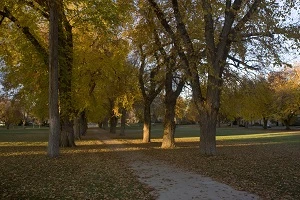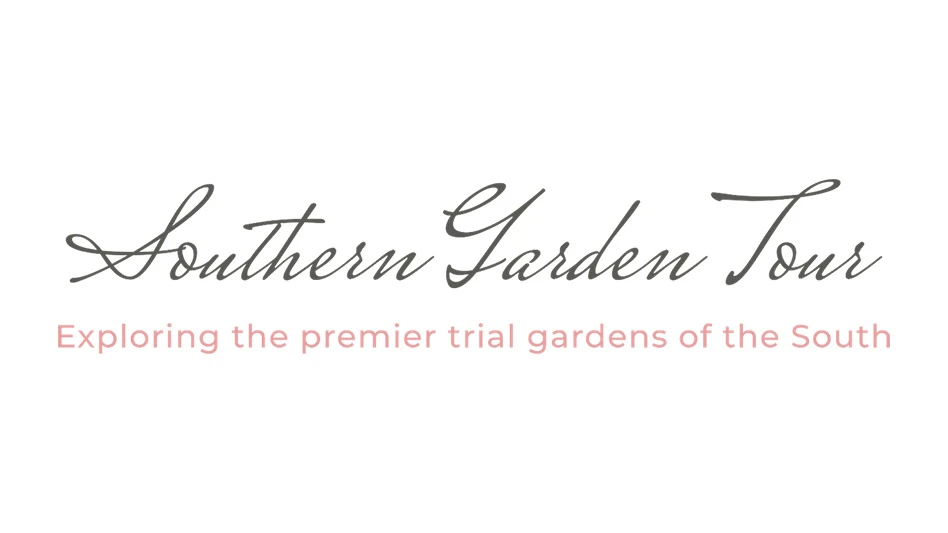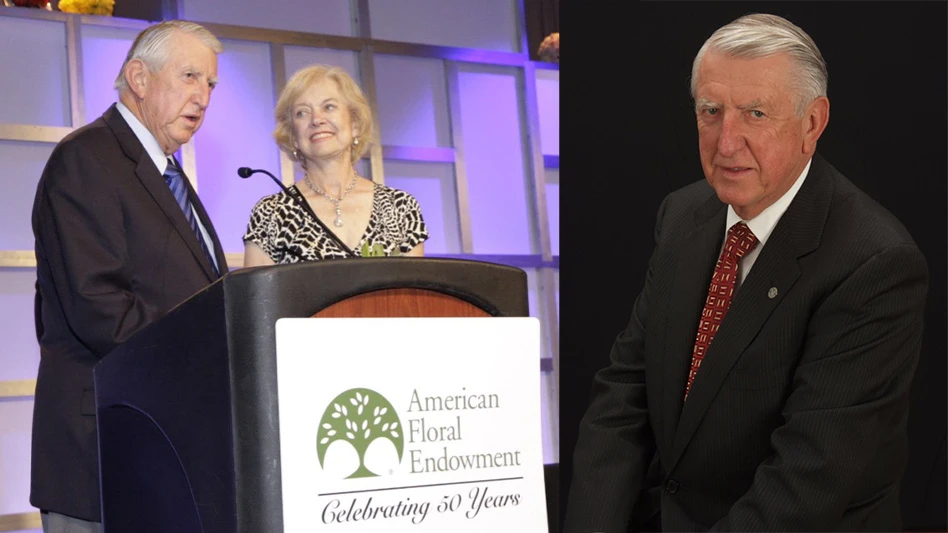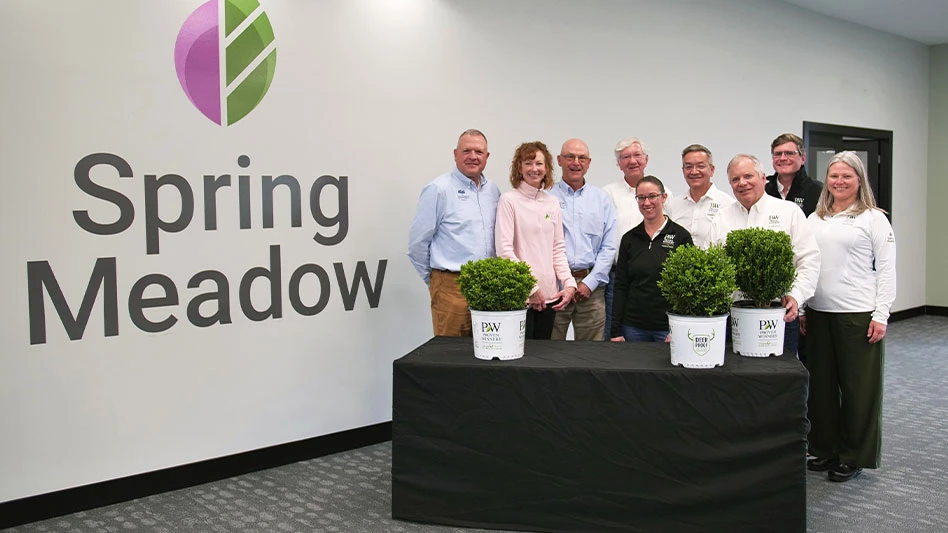

Elm trees are moderately tolerant to iron chlorosis. © Marek Uliasz | Dreamstime.com
From Ward Upham at the Kansas State University Extension:
Iron chlorosis is a common problem in Kansas (and throughout the Midwest and Southwest U.S.) because of the high pH in some soils. Though these soils normally contain adequate amounts of iron, the high pH ties up iron so that it is unavailable to plants.
Classic symptoms of iron chlorosis are yellow leaves with a network of dark green veins. In severe cases the entire leaf turns yellow and the edges of the leaf scorch and turn brown. Plants may eventually die.
One of the best methods of avoiding iron chlorosis is by planting tolerant trees. Trees that are susceptible to iron chlorosis include pin oak, sweetgum, and dawn redwood. Moderately tolerant trees are ash, cottonwood, linden, elm, hawthorn, most oaks and ginkgo. Even closely related trees can differ markedly in their resistance. For example, pin oak is notorious for sensitivity to iron chlorosis while most other oaks are moderately tolerant. Also, red, silver and Amur maples are susceptible, but Norway maples are much less so. Several methods are used to correct iron chlorosis in trees. Not all methods work in all situations. The following are the most common.
Soil treatment: The idea is to acidify a small quantity of soil so the tree can absorb the iron it needs from these areas. This will only work on non-calcareous soils. A mixture of equal parts of iron sulfate and elemental sulfur are mixed together, and the mixture is placed in holes made under the dripline of the tree. Holes should be 1 to 2 inches in diameter and 12 to 18 inches deep. Space them 18 to 24 inches apart.
Each hole should be filled with the iron sulfate-elemental sulfur mixture to within 4 inches of the soil surface. This method is labor intensive and results can vary. Iron chelates can also be used as a soil treatment. The only chelate that is effective above a soil pH of 7.2 is Iron EDDHA. It can be found in the products Sequestar 6% Iron Chelate WDG, Sequestrene 138 and Millers FerriPlus. Use these products in the spring before growth starts. Dry chelate can be sprinkled on the soil and watered in or dissolved in water and applied as a drench under the dripline of the tree. Normally, soil-applied chelates last only one year.
Foliar treatment: Leaves are sprayed directly with iron chelates or iron sulfate early in the season. Response is quick, but leaf burning is possible. Response can be spotty and temporary. Repeat applications may be needed.
Trunk injection or implantation: In this method, holes are drilled in the lower trunk and ferric ammonium citrate (iron citrate) or ferrous sulfate is introduced through the holes. There are both liquid and dry formulations. Successful applications often last several years. The preferred time of application is during the spring just after the leaves have fully expanded. Use a brad-point drill bit to minimize tree wounding. Research has shown the uptake is enhanced if the holes are drilled in the root flares near the soil surface.
Click here to read the rest of the e-newsletter, or e-mail Christy Dipman (cdipman@ksu.edu) if you want to receive the K-State Horticultural Newsletter.
Latest from Nursery Management
- Grant awarded to test western U.S. wood species for use as wood fiber potting substrate
- Pennsylvania Horticultural Society announces 2025 Gold Medal Plant winners
- Leading Women of Horticulture: Angela Labrum, Bailey Nurseries
- The HC Companies, Classic Home & Garden merge as Growscape
- Terra Nova releases new echinacea variety, 'Fringe Festival'
- Eason Horticultural Resources will now officially be known as EHR
- BioWorks receives EPA approval for new biological insecticide for thrips, aphids, whiteflies
- Ellen Mackenbach-Lakeman appointed new CEO of Dümmen Orange





